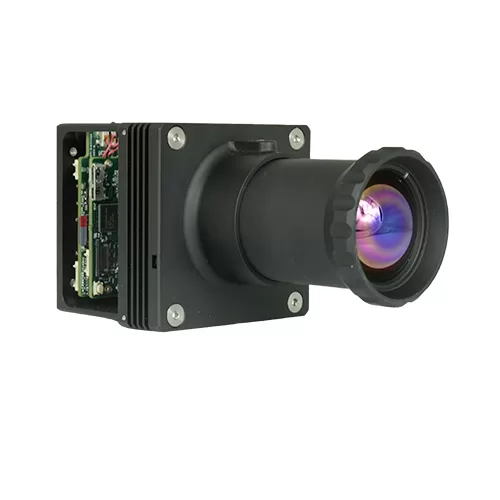Last modified on March 25th, 2025 at 7:39 pm
Infrared sensors can play a vital role in wildlife management by monitoring animal behavior, habitats and population
Our Vayu HD is one camera from our HD family of infrared cameras. Its HD format has a 1920×1200 pixel resolution, making it the first full HD infrared sensor available on the commercial market. The Vayu HD is the lightweight open frame version. This version of the camera is intended for integration into gimbals or other applications that require a small, compact, lightweight design. There is also our Vayu HD-Industrial, an enclosed and ruggedized version that has an Ip54 ingress rating, so it can be used in an outdoor environment. Both variants of the Vayu HD have found applications in wildlife management. We sat down with Bruce Warburton of Landcare Research to find out how Landcare Research is using the Vayu in its work.

1920 x 1200
LWIR

1920 x 1200
LWIR
New Zealand’s Invasive Mammals
Bruce’s focus is on New Zealand’s invasive mammals, so we’ve got a range of introduced species. Some of them are more invasive than others and some of them are seen as pests where some of them are valued. Elk and white tailed deer were introduced to New Zealand and the conservationists see them as a pest, but hunters see them as a resource. This creates a bit of tension in New Zealand around how some of these introduced species are viewed. In Bruce’s mid to late teens he started hunting and fishing, and became aware of the research around wild animals in New Zealand. There are deer and even chamois from the European Alps, and Himalayan, or alpine areas. Bruce originally envisioned combining his love for the outdoors with a research career where he could study these beautiful creatures. But when his career started in 1977, he studied the introduced possums that were introduced to New Zealand. These much smaller animals played a significant role in maintaining bovine tuberculosis. A lot of his research was around how to better manage brush tail possums.

Choosing the Right Camera
Bruce’s team has been doing a lot of flying first thing in the morning doing research to introduce wallabies in some areas and eradicate them elsewhere with the Vayu-HD camera. The previous cameras used were around 1080 or 750 array format. If you’re trying to keep costs down by flying higher with a wider swath, so you can cover more ground. The issue has been the higher in altitude you get, you start losing the ability to differentiate between species. You would see something hot and not be certain if it was a wallaby or sheep or whatever amongst some vegetation. It quickly becomes clear that the higher resolution sensor you’ve got, the better. The Vayu-HD was the highest resolution camera Bruce’s team could fine for purchase.
Putting the Camera to Use
There was a steep learning curve with it, but it produced really good images. They found that doing non-uniformity corrections is difficult, especially with a UAV that is in the air. When in a helicopter it is much easier to hold a black object in front of the lens. The images his team got were great! Having a higher resolution camera, depending on the distance or height above ground, you could clearly differentiate between species. Bruce’s team needed the camera for a specific project to monitor wallaby abundance before a control operation and after the control operation. They had a number of fixed transects that were a kilometer long and they flew them several times pre control and then several times post control. They’d be able to identify the animal in post process by its gait, or the way it moves. In New Zealand, they’ve introduced species that need to control them. They are in favor of any new technologies that that make it more cost effective to do so. There are no seasons for hunting deer because they’re introduced. We can go hunting any time and shoot any number of deer, that we want. A lot of recreational hunters using thermal scopes as well. There are regulations stating you’re not allowed to hunt at night on our conservation land, but generally the public seems to be very supportive of thermal technology.



Advice to Others
Bruce says try to get a bit of a good understanding of how technology can actually help. Ask yourself “what is it actually going to provide?” Also, be very open and learn about what the limitations or constraints. Talk to people who have used it and be aware of snake oil merchants or salespeople. There are pros and cons and the right time and place to use this technology for benefit.
